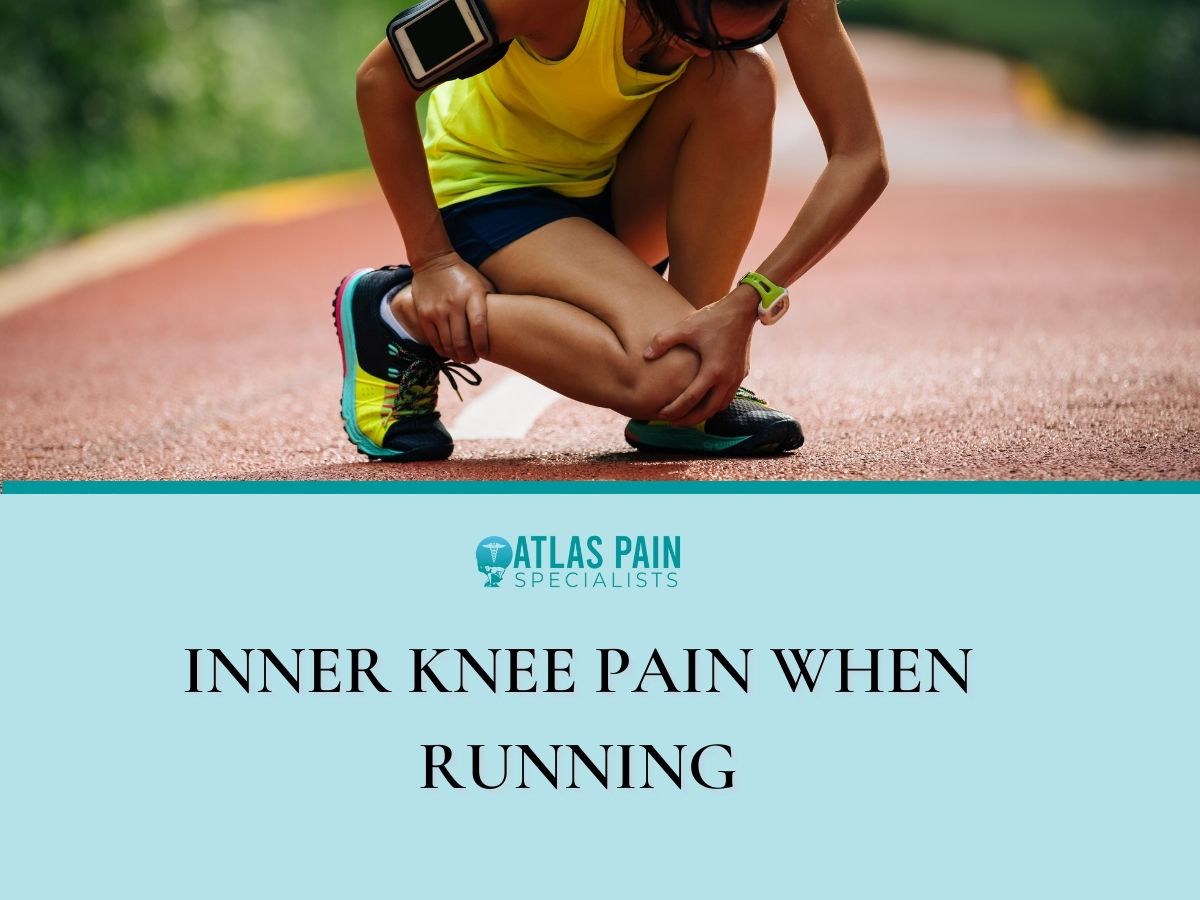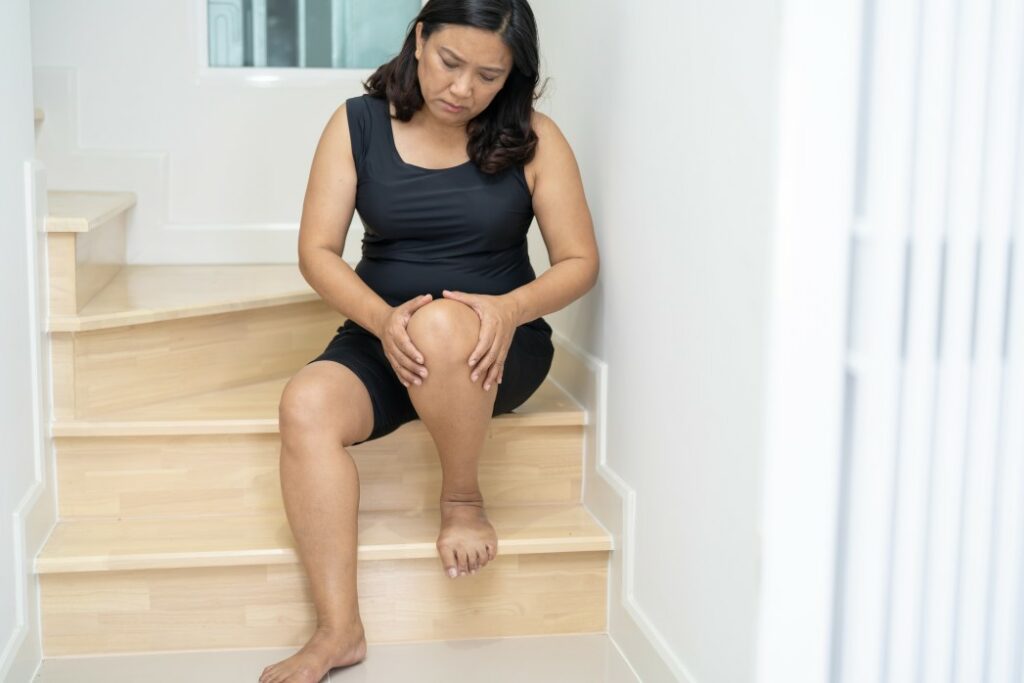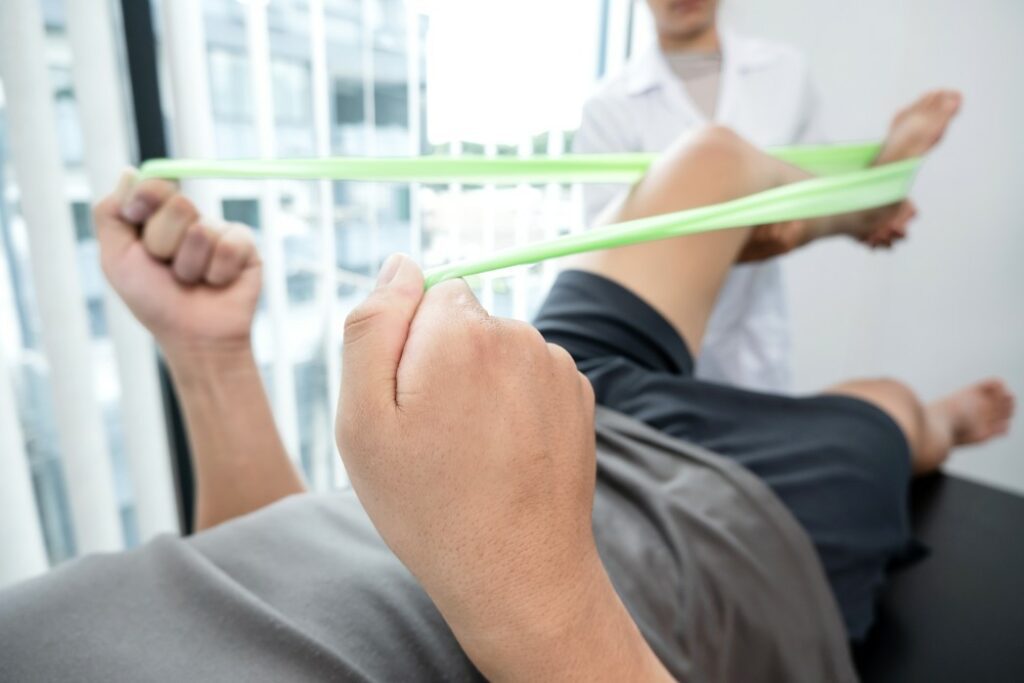

Inner knee pain when running
Runners put their legs to greater use than most people in their daily lives. As a result, they are more susceptible to various pains caused by a variety of factors.
Inner knee pain and heel pain are types of these conditions. It can occur even when you are not running, and it is commonly referred to as medial knee pain or runner's knee in its more generalized form.
The Anatomy of the Knee
The knee comprises ligaments, muscles, nerves, and bones, all of which work together to allow it to perform its mobility and stability functions. As a result, it can support the body weight while also bending to accommodate locomotion.
The knee is made up of structures that connect the femur to the tibia, and these structures are protected by the knee cap (patella). The tibia is joined to the smaller bone fibula, forming the knee joint.
The joining of these knee bones forms the knee joint by ligaments. These are:
- The collateral ligaments (medial and lateral)
- The posterior cruciate ligament
- Anterior cruciate ligament
Tendons attach muscles to bones, and cartilages cushion the impact of the femur and tibia on each other. The medial and lateral menisci are the names of these two cartilages.
The bursae in the knees are fluid-filled sacs that aid in the smooth movement of the knee.
What Causes Inner Knee Pain?
Knee pain can result from injury or inflammation to the knee joint or its associated structures. On the other hand, inner knee pain can be caused by various factors, some of which co-occur as the trigger or the cause.
Some of them are as follows:
1. Medial collateral ligament injury (MDL)
The medial collateral ligament is located in the inner knee and is one of the many ligaments that make up the knee. The inward buckling or bending of the knee causes the ligament to stretch and strain, which results in pain.
When you move, you will hear popping sounds. It is temporary and will go away on its own.
This is not likely to be the source of discomfort because, for this to occur, you would have to be involved in a severe injury, such as a knee twisting accident. If the pain occurs due to daily running, it is possible that running is not the source of the pain.
2. Bursitis
Inflammation or injury to the bursae can occur due to repetitive motions of the knee, resulting in knee pain. Bursitis is caused by excessive use of the knee without adequate rest or too much strain on a rested knee.
They relieve pressure between the knee's structures while reducing friction between them. Inner knee pain can occur below the inner side of the knee joint, resulting in pain underneath the inner side of the knee joint.
Runners' bursitis of the knee, which occurs when the bursae in the knee are overworked, can be a usual source of knee pain and can severely restrict mobility. Because the pain occurs during knee movement, it may occur even when the patient is resting.
In the pes anserine bursa, located below the knee joint on the inner part of the knee, runners experience pain and inflammation due to their exercises.
3. Saphenous nerve pain

This is a nerve that runs along the inner part of the knee on the outside of the leg. Because the pain is localized to the nerve, it may not manifest itself in the form of physical symptoms such as swelling.
The pain is usually spread out along the nerve, irritating the hip and leg regions as a result. Acute pain in the medial part of the knee is caused by compression of the saphenous nerve, located along the thigh bone.
The saphenous nerve's primary function is to detect temperature, touch, pain, and other sensory functions. Because it is located deep within the leg, injuries are infrequent.
A pinched nerve or a traumatic injury to the leg may be the source of the discomfort.
4. Meniscus injury
The meniscus is the padding between the knees that helps distribute the weight from the upper leg to the lower leg as it passes through the knee joint. Injuries or wear and tear of the meniscus can result in pain if the meniscus is damaged or worn away over time.
It may deteriorate further, resulting in knee locking, making moving the knee a significant challenge. Although it is not a common cause of inner knee pain it should always be examined.
This condition is characterized by stiffness, locking of the knees, and sharp pain when the knee is twisted.
5. Knee arthritis
This refers to the deterioration or defects of the knee joint itself. Progressively, it takes place over time.
Inflammation in the joints caused by rheumatoid arthritis can cause inner knee pain in some people. The following characteristics distinguish it:
- Stiffness in the morning
- Knee discomfort in the morning
- Early in the morning, pain that becomes more severe as the day progresses
6. Iliotibial band (IT) syndrome
This is a condition in which the ligament connecting the pelvic bone to the shin bone becomes too tight and rubs against the thigh bone. Pain that gets worse the more activity is done is common among long-distance runners.
The pain is felt outside the knee or hip, accompanied by swelling and irritation of surrounding tissues. It can occur due to excessive foot pronation or internal tibial torsion, among other things.
Bilateral iliotibial syndrome is the term used when the pain occurs in both legs.
Several factors could be responsible for it, including the following:
- Running on a surface that is skewed or tilted
- Warming up too quickly or not warming up enough before working out
- Running down slopes
- Not getting enough sleep
Apart from the mentioned conditions, knee pain when running may be caused by:
- Obesity
- Tight hamstring muscles
- Irritation of the medial plica
- Running or walking with a turned-out knee or leg
- Knee contusion (A blow to the knee from a fall, for example)
Symptoms of Inner Knee Pain

Inner knee pain symptoms vary from patient to patient and the cause of the pain. Some common symptoms include:
- Discomfort in the inner side of the knee
- Swelling
- Difficulties with knee-related movements like walking up the stairs or standing from a seated position
- Pain during activities that put stress on the knee
- Pain that comes when running and after running
Diagnosis of Inner Knee Pain
Diagnosis of inner knee pain is made through different methods to pinpoint the source.
It may be done using imaging such as:
- MRI
- X-Ray
- Ultrasound: Shows the movement of ligaments during flexion or extension of the knee.
What is involved in imaging?
X-rays show minor detail and are used to view defects involving the bone. They include;
- Fractures like patella or tibia fractures
- Bone spurs that may be a sign of arthritis
- Alignment of the joints
- Joint spaces; narrowing may indicate knee arthritis
MRIs identify problems affecting the muscles and other tissues and are more detailed than X-rays. They show irregularities in joints and bones and can identify swelling.
It may also be accompanied by physical tests, which involve mobility tests and palpation.
Palpation is whereby a physician uses their hands to feel and identify possible sources of pain. This helps narrow down the cause of pain after mobility tests.
Mobility tests involve extension and flexion of the knee, rotating the leg, and checking the person's gait, among other tests.
Inner Knee Pain Treatment
Strengthening the knee muscles, as well as the thigh and hip muscles, can help to alleviate the discomfort of arthritis. Additionally, they help relieve stress and strain placed on the primary knee muscles.
Some of the exercises include:
- Squats
Various progressive types of squats can be used to strengthen the leg muscles. They include:
- Split/ Bulgarian squats
- Staggered squats
- Behind the heel
- Hawaiian squats
- Shrimp squats
- Pistol squats
- Dragon squats
- Leg presses
- Swimming
- Leg extensions
Before performing them, stretch the muscles involved in each of these exercises, including the hamstrings and quadriceps. These muscles relieve the knee muscles of a significant amount of work, thereby preventing them from becoming overworked.
Medication may be administered to help with the pain and allow a comfortable healing process. Some examples of pain medication are
- Nonsteroidal anti-inflammatory drugs (NSAIDs)
- Corticosteroid injections
Home therapy is an effective method for pain relief and easing soreness and tension in muscles. It can be done in a few ways:
- Hot and cold therapy; Cold therapy for pain and swelling, hot for soreness.
- Self or aided massage
- A foam roller can be used to massage the body
Surgery is used for more invasive and intensive treatments to correct damages or injured structures that can't be easily treated through other conventional methods.
Inner Knee Pain Prevention

Running pain-free may be a step away with a few measures.
- Before and after running, ensure you stretch your knees and legs.
- Warm-up before running to get your muscles accustomed to the flexion and tension to prevent excessive straining.
- Maintaining a healthy diet is also crucial for a healthy knee. A heavier upper body strains the knees, which may lead to pain.
- Have enough rest after workouts, and you may massage the knee to relieve stress on the knee muscles.
- Don't start with the intensive workouts but gradually increase them when you begin running or a running routine.
- Take breaks often to stretch and rest the knees between workouts that are straining the knee muscles.
Can Inner Knee Pain Be Caused Outside The Knee?
Inner knee pain can occur due to excessive stress placed on the knee joint. This may occur if the other muscles that bear a portion of the weight from the knee are weakened as a result of the injury.
The thigh and hip muscles are among the muscles that make up this group. Strong or tight hip and thigh muscles put additional strain on the knee's muscles and ligaments, resulting in pain.
About Dr. Sean Ormond



